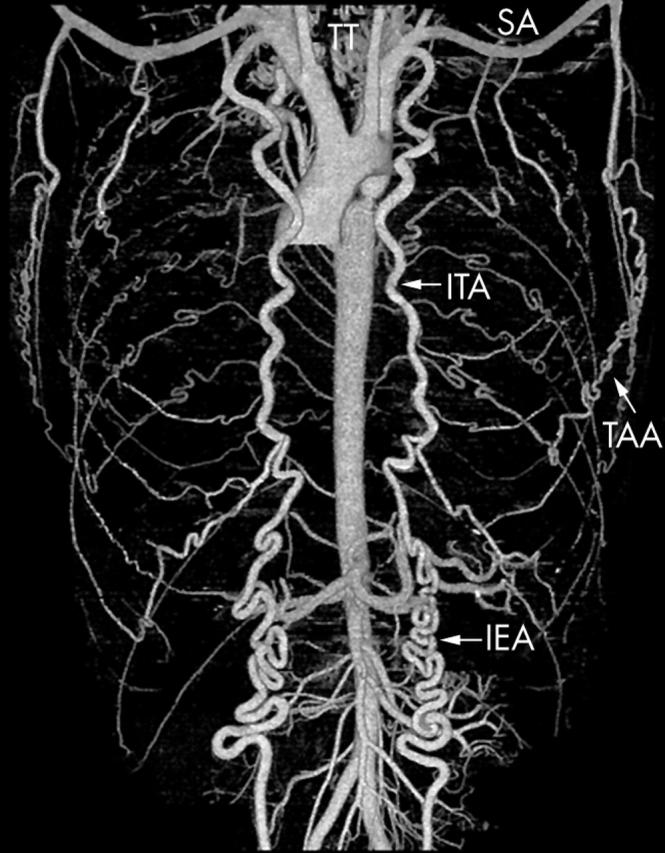A 21 year old man was referred for evaluation and endovascular treatment of aortic coarctation. Conventional aortography demonstrated a high grade, postductal aortic coarctation distal to the origin of the left subclavian artery with a delayed opacification of the post-coarctation descending thoracic aorta both via the stenosis and via collateral pathways. When starting the endovascular procedure, the patient perceived sudden back pain. A 64 channel multislice computed tomography (MSCT) angiography (Sensation 64, Siemens, Germany) was performed and excluded a suspected acute aortic dissection. It furthermore demonstrated the morphology of the high grade aortic coarctation and the extensive collateral circulation. On the basis of the patient’s preference, open vascular aortoplasty was performed.
Chronic narrowing of the aortic lumen provokes development of collateral vessels to allow the flow of blood from high pressure to low pressure areas: from the internal thoracic arteries both to epigastric vessels and intercostal arteries, from the subclavian arteries via thoracoacromial and subscapular arteries to intercostal arteries, from the thyrocervical trunks via descending scapular arteries to intercostal arteries, and via vertebral and anterior spinal arteries. While conventional aortography is still considered the primary imaging modality for diagnosis and grading of aortic coarctation, MSCT angiography is likely to overtake its role in the preoperative work up. In particular, new generation 64 row MSCT scanners achieve unprecedented diagnostic detail by acquiring three dimensional datasets with a high spatial and temporal resolution.
This research has been supported by the National Center of Competence and Research, Computer Aided and Image Guided Medical Interventions (NCCR CO-ME) of the Swiss National Science Foundation. The authors declare no competing interests.
Figure 1.

Anterior volume rendered 64 channel multislice CT angiography image after deleting bones, heart, and pulmonary vessels. IEA, inferior epigastric artery; ITA, internal thoracic artery; SA, subclavian artery; TAA, thoracoacromial artery; TT, thyrocervical trunk.


